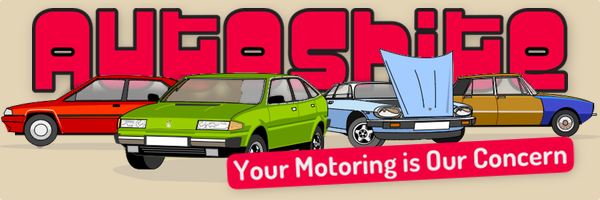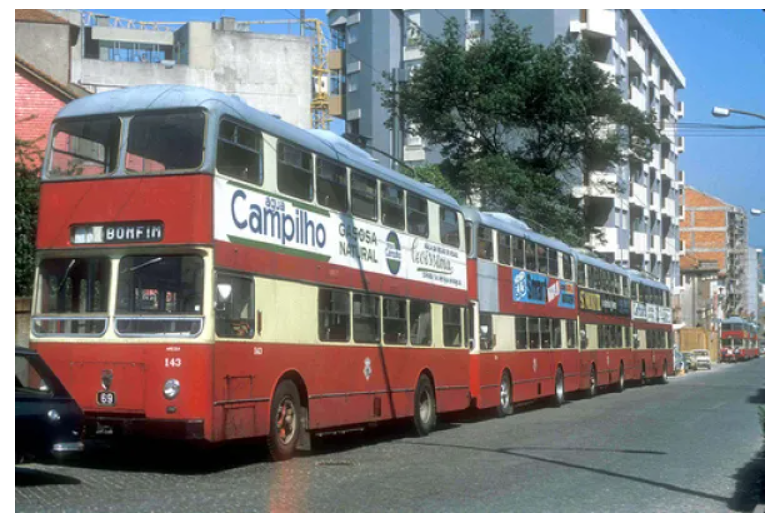-
Posts
5,147 -
Joined
-
Last visited
-
Days Won
1
Content Type
Profiles
Forums
Events
Everything posted by Inspector Morose
-
As long as you don't want boot capacity... Yeah, I'm being facetious and I know that the RE did have a small boot behind the engine, along with small side lockers but that really wasn't a patch on something like a Leopard (as long as it's not a B51 bodied one that had a tendency to dump its boot and contents onto the road). The RE was vaguely comparable to the Rover 75, in that having started out as a well-specified chassis but then was slowly de-contented over the years to become a bit of a shadow of what it could have become. If it wasn't for that pesky Leyland National <shakes tiny fist into the air>. I sometimes wonder, if the National never got off the drawing board and the RE was developed along the lines of what Bristol wanted to do with it - it would have been utterly unbeatable in the service bus/semi-coach market. For coach work? I think there were better chassis out there (AEC Reliance 760 would take some beating, it pains me to say).
-
Agricultural engined, smoke snorting buses with bone jarring suspension, cold blue formica and bare checker-plate interiors topped off with heat sticky red vinyl seats. What a time to be alive.
-
Well, at least they could grow tomatoes at the front. Actually, one of those for conversation isn’t the worst idea. Bags of internal space to build into, Merc power on the early ones but the electrics had a habit of going to sleep and could only made to function again with a laptop and Optares proprietary software. From 20 years ago.
-
And that the brake lights come on when you accelerate in reverse - a surprisingly common way of operating the brake lights on a certain age of cars and commercials. I still have a little bottle of mercury that someone recovered from all of the brake light mercury tilt switches in Bournemouth trolleybuses.
-
Crikey! That ‘bar’ was one of ours at NBB! (Slow as fuck though).
-
Haven’t seen that one out for a bit. Wonder how bad it really is? Early ones usually stand up pretty well to the ravages of time and 3 large is pretty much a bargain for an early National if it is still as good as the pictures. Hmm, Steve Kirk. Name rings a faint bell.
-
A107WVP I believe.
-
Back from Amsterdam and they seem to be almost there with the switch over to electric propulsion for their bus fleet. I must have seen only a handful of diesel buses in the week I was there. A lot of the electrics are artics too. But surely an electric bus of that weight can't have enough capacity? Well, this is their answer. Let's have a closer look, shall we? A simple pantograph mounted on the bus extends up to a pole mounted contact so that opportunity charging can take place when the bus stops for more than a minute or two. Unlike the system we've been using over here with the charging pantograph moving from the station to meet contacts on the bus (as promoted by Volvo), this is lighter weight, less visually intrusive, and can be installed more frequently along the route for a similar cost of one of the more complex stations. Here at Sloterdijk, not only are charging stations mounted at lay-over points, they are also positioned at the stops as well to serve through routes. It won't be too far in the future now that Amsterdam region will have (near as dammit) a 100% electrically powered integrated public transport system, consisting of train, tram, metro, and bus. Bloody impressive.
-
Don’t think it’s meths as thats denatured ethanol so you’d be just upping the ethanol dose.
-
I daily an R52 Mini. Of course I can live with faults, just not always the same faults that I parked it up with the night before.
-
One of these appeared a few years back at Sandtoft. I managed a drive of it for a shift, quite nice machine considering its age.
-

Chaseracer's chod: French tat a speciality
Inspector Morose replied to chaseracer's topic in AutoShite
<runs away fast. Very fast> -
Astravan lwb.
-
Ooh, I’ll have to disagree with you there. According to the folk that built them 001 was the smiley front bus/dual purpose body seen on many lightweights and Daimler Roadliners in Canada. 002 was the square looking expressway coach 003 was the NBC abomination that was built down to a price and looked it, partially contributing to Willowbrooks demise. 008 was the Spacecar that looked cool but was so lightly built, it didn’t really have the strength to keep itself in one piece for long. 004-007 were export models built on various chassis. After Willowbrook closed, it was started up again, usually rebodying used chassis with cheap looking and feeling bodies. After deregulation in 1986, they had a resurgence, rebodying many Leopard coach chassis into buses to make a cheap workhorse. In true Willowbrook tradition, the bodies were not exactly the best wearing of things. As a side tale, we had a Leopard rebodied by them with their Warrior body (OKG158M). But it went further than that. We ran a good number of Bristol REs at the time and we talked with Willowbrook about having them rebodied. Now, our competition, WM Travel were having delivered a good number of Lynxes and so we asked if the Warrior could be restyled to look a bit more like them and the floor line lowered a bit. The redesign happened and our Leopard was the first of the redesigned Warriors with square windows and body built directly onto the chassis without body bearers. All well and good and we regularly went up to them to see progress. Then delivery. On the same day as the Leopard was delivered, VOSA had come in for their regular ‘pop in for a cup of tea’ inspections. As the Leopard had been fully refreshed by Willowbrook (along with a fresh MoT) we showed them it. It gained nine prohibitions without ever leaving the yard since delivery. Over the next few months, problem after problem arose, ranging from water ingress from the wheel arch boxes, screens constantly cracking due to lack of support and horrendous internal reflections at night. We lost faith in them and cancelled our second Leopard rebody (ex-HHA196L, fitted with a two speed rear axle) and walked away from any further discussions about rebodying REs. We started buying Leyland Nationals to completely replace the fleet soon after (egged on by our ‘friendly’ VOSA inspectors) and sold OKG on to Sussex Bus who had a number of other rebodied Leopards. I last came across it at Bournemouth, inside Mallard Road depot (it was a while ago) and did have thought about buying it back for old times sake. Then I remembered what an utter heap it was…
-
Okay, okay. I did write a bit about the class 140, the daddy of the pacer. Its an odd and rather convoluted tale so bear with.. https://mundaneonline992633965.wordpress.com/2021/09/ Thats where I put all of my writings on things public and transport, if you’re interested in a deeper peruse. It’s not well organised, one day I’ll sort it out so that it’s a bit better to navigate around. One day.
-
I’m staying out of this one…
-
Thinking of hydraulic braked buses that are not thought of having hydraulic brakes (yup, king of the niche subject, me), how about these three? This is GCN3N, one of a triple of Ailsas bought by Tyne and Wear PTE very early on in the models production (GCN 1-3N). What made these of note was the fitting of Lockheed power hydraulic braking from new instead of the standard air system. Quite why these three, why Tyne and Wear, or why no others were ever made is something that is a mite perplexing. Were they experimental for a future option for London? Did TWPTE fancy paying with their own fluid braked buses? Whatever the reason, they didn’t last long and were sold off, spreading around the country, the different braking systems rapidly replaced with standard air brakes. GCN2N was briefly preserved but unfortunately was sold on to become a crew dining bus for film work. It did get saved once again but the task to rebuild seemed too great for anyone to take on and it was scrapped a few years ago. Sad really, as they were the only three ever built.
-
The Fleetline was really quite a basic piece of kit compared to a Routemaster. Simple chassis, cart springs, only the layout was anything different to what went before. LT couldn't change an engine per shift? Fucking hell, the Fleetline was a piece of piss to do an engine change on with its separate gearbox. The Leyland engined ones were even easier. No that was simply LT engineers going all WAH WAH, IT'S NOT OUR BUS on it all. The gearbox issue was an issue. Problem was that Daimler had designed the toggles on the brake bands to oppose the rotation of the gear drum. On the rudimentary auto gear control that allowed full throttle changes, this forced the intermediate gear bands to slip and burn out. I'll give LT that one as they forced a redesign to make the bands grip with a servo action.
-
Yup, basically a powered Lockheed setup, as used on various things from trucks to trolleybuses (Walsall goldfish bowls had a similar set up). There were a number of hydraulic braked DMSs and this was related to hydrapak, a power management system being developed by the experimental department where every ancillary was to be fluid powered - doors, gears, brakes, even the windscreen wipers. A hydraulic powered alternator was also to be fitted to allow for it to be sited right by the batteries, reducing voltage losses. But that's not all. One DMS was converted to two stage hydrostatic drive, replacing the conventional gearbox. It was hopeless, incredibly noisy and usually blew its high pressure lines every time it changed 'gear'. Needless to say, that never entered service in that form. After hydropak, came electropak. Basically the same idea but using electricity. Another dead end.
-
Yeah, the DMS saga was a bit of an odd one. Based on a chassis that was widely regarded by operators outside London, LT even had 5 on trial (along with 50 Atlanteans) before ordering their own special version. The design came from the recently appointed head, Ralph Bennett who had come from Manchester. During his time in the Lancashire City, Bennett had introduced the Mancunian double deck body, incorporating his ideas on design and layout. Bennett was a great believer in one person operation and automatic fare collection and it can be no surprise that, after leaving the North for the bright lights of London, that he pushed for these to be incorporated into the new bus. Not only was Bennett's ideas from Manchester incorporated into the new DMS, the designer was common to both - Industrial Designer (mainly for Greater Manchester) Ken Mortimer. While the body design was fairly fixed, the technical side was far from it. Faced with a fairly fixed specification, LTs engineers started to push for modifications to the chassis. Not only that but their inability to decide on how the new bus was to be overhauled led to constant flip-flopping over whether the body was to be capable of being separated from the chassis or not (rear engined bus chassis were usually more reliant on the bodywork for overall strength than the more traditional front engined bus, and vice-versa as nobody apart from LT routinely took bodies off chassis anymore). The DMS entered service and was thoroughly disliked by most in what could be described as the biggest case of 'not invented here' there has been in the bus industry up to then. Fitters hated them, as they were not a Routemaaster and so somehow unfathomable, Stores hated them as they had to get used to the ebbs and flows of a new selection of spare parts and drivers disliked them as they had to do more than sit in the box at the front. One DMS of each body type (MCW or Park Royal) was bought in to experimental to see if the body could be separated for overhaul, even though they had decided (finally) that it didn't need to on pushing the button for the order. Surprisingly, the metal framed MCW body held up but the Park Royal showed signs of sag - LT experimental then decided that the DMS was 'a bad 'un' as it didn't do what they decided it didn't need to do in the first place. Somehow (mainly because LT was in dire need of new stock), the DMS was taken for another 2000-odd buses, starving the rest of the industry of a bus that they wanted to buy but couldn't because LT was buying a bus that it didn't want. Not long after the last was delivered, LT decided to get rid and dealers like Ensign took them on, spruced them up a bit and sold them at a handsome profit to many ready customers around the world. Would the FRM be better is it had been put into production? Possibly for LT but with another single customer bus, like the Routemaster was, AEC probably wouldn't have survived it as there was no hope of entering the rear engined race that late in the game.









